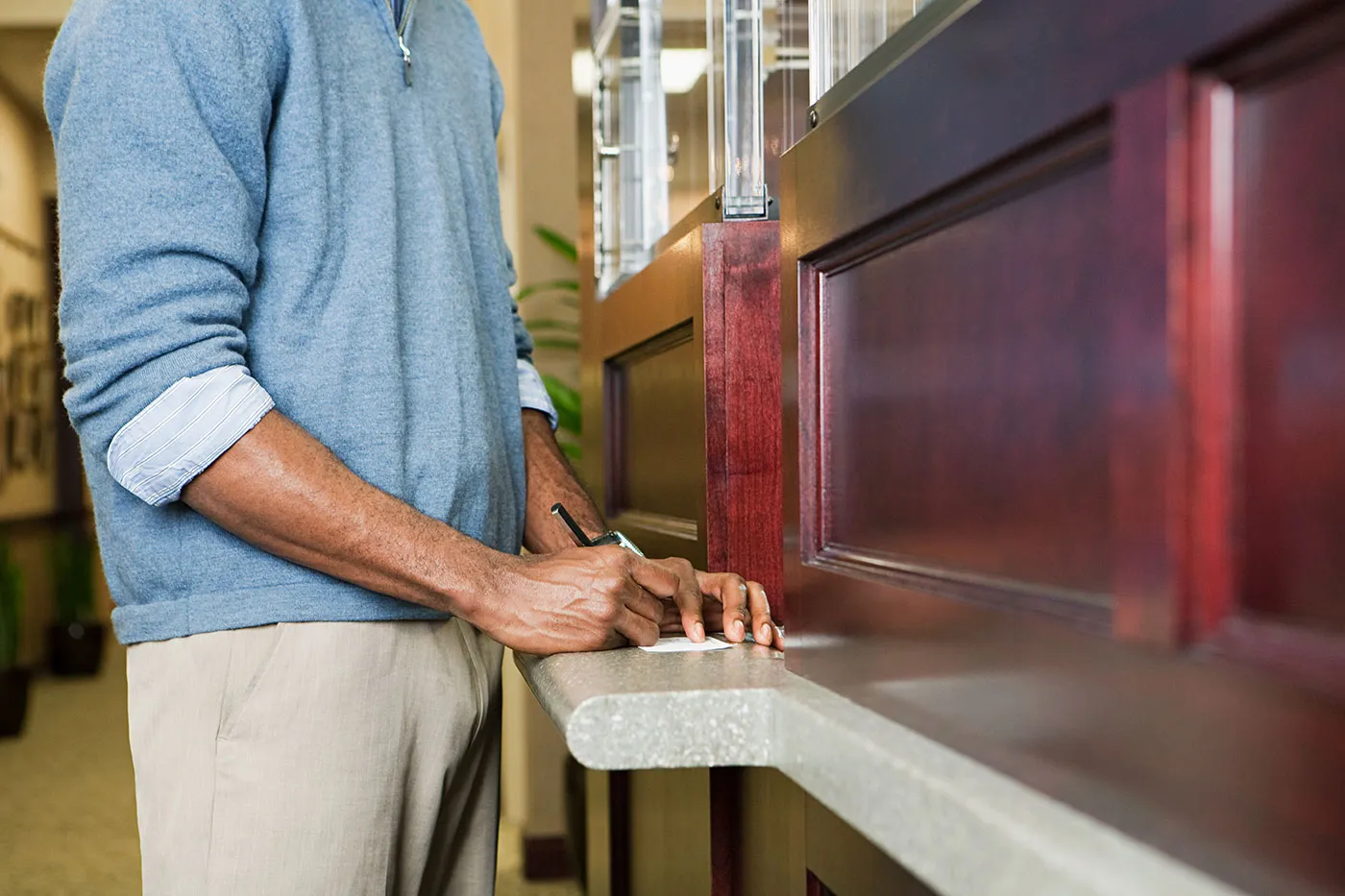Where Can I Get a Money Order?

You can get a money order from many retail stores, supermarkets, financial institutions and even the U.S. Post Office. A money order works kind of like a check and can be a convenient and safe way to send someone money or pay a bill. Because a money order is paid for upfront, you don't need to worry about overdrafting your checking account—you don't need a bank account at all to buy one—and the recipient can be certain the funds are available.
Places to Purchase a Money Order
Some popular places to purchase money orders include:
- Retail stores: Convenience stores, drugstores, supermarkets and grocery stores may sell money orders, often by acting as agent locations for Western Union or MoneyGram.
- Banks and credit unions: Banks and credit unions generally sell money orders to their customers.
- Payday lenders and check-cashing stores: Similar to retail stores, the money orders that payday lenders and check-cashing stores sell may come from Western Union or MoneyGram.
- The U.S. Post Office: The USPS also sells money orders, including military money orders from military facilities.
How to Fill Out a Money Order
The exact steps for filling out a money order can depend on where you're buying a money order and who you're sending the payment to, but it's a fairly straightforward process. The money order will include:
- The recipient's information: You generally need to fill in the recipient's information when you buy the money order. Make sure you spell the person's or organization's name correctly.
- Your information: You also need to add your full name and possibly your address to the money order. You may be identified as the purchaser, sender, remitter, drawer or there could be a space next to "from."
- Your signature: There may be a space on the front of the money order to sign.
- Account or memo information (optional): You may have the option of adding a description of what the payment is for, or the account number of the bill you're paying.
If it's your first time purchasing a money order, you can also ask the person selling the money order for guidance. Once the money order is processed, you'll get a receipt that serves as your proof of purchase and may include tracking information, which you can use to see if the recipient cashed the money order. Having the receipt can also help you cancel your money order in case it's lost or stolen.
How Much Does a Money Order Cost?
The fee you'll pay for a money order can depend on where you buy it and the amount it's for.
For example, at the Post Office, you can buy a domestic money order ranging in amount from 1 cent to $500 for a fee of $1.30, but a money order that's $500.01 to $1,000 costs $1.75. (Postal military money orders have a flat fee of 45 cents.) At Walmart locations, there's a maximum fee of $1 per money order.
Banks and credit unions might charge higher fees, such as $3 or $5 per money order. However, customers with certain types of accounts—including high-tier accounts that require a large balance—might get money orders for free.
When you buy the money order, you'll need to pay the entire amount upfront. Be prepared to pay with cash or debit, as you may not be able to pay for a money order with a credit card. If you are allowed to pay for the money order with a card, your credit card issuer might charge you a cash advance fee.
There's also generally a $1,000 limit per money order. If you want to get one for a larger amount, you may need to purchase several money orders. Or, if you have a bank account, a cashier's check could be a good alternative.
When Should I Use a Money Order?
There are many situations when using a money order could be a good idea:
- You don't have a bank account and don't want to pay bills with cash.
- The recipient requires you to pay a bill with a money order or cashier's check.
- You want to send a check, but are worried that you don't know when it will be cashed and whether it will overdraw your account.
- You want to send a check-like payment that's easy to track and cancel.
But at times, other payment methods may make more sense. For instance, if you're sending money to a friend or family member, digital services like Zelle, Venmo or PayPal offer free and secure electronic transfers. You may also be able to pay bills directly from your bank account, either with an electronic transfer or by having your bank send a check to the creditor.
Beware of Scams
While money orders can be a convenient, secure and inexpensive way to transfer money or pay bills, these qualities also make them a favorite tool of scammers. Watch out for money order scams, which often involve scammers sending you a fake money order. It may take several days to discover the forgery, and, in the meantime, you've already sent the scammer a product or "refunded" part of the payment.
What makes a good credit score?
Learn what it takes to achieve a good credit score. Review your FICO® Score for free and see what’s helping and hurting your score.
Get your FICO® ScoreNo credit card required
About the author
Louis DeNicola is freelance personal finance and credit writer who works with Fortune 500 financial services firms, FinTech startups, and non-profits to teach people about money and credit. His clients include BlueVine, Discover, LendingTree, Money Management International, U.S News and Wirecutter.
Read more from Louis